August 19 morning
2020 August 19
Jeremy Tatum writes: I don’t normally include sightings and photographs of invertebrates from off-Island on this site, but Sharon Godkin sent a photograph of a tussock caterpillar from Powell River just at a time when I am interested in these caterpillars. First, here are photographs of two confidently-identified species, posted recently on this site and repeated here:
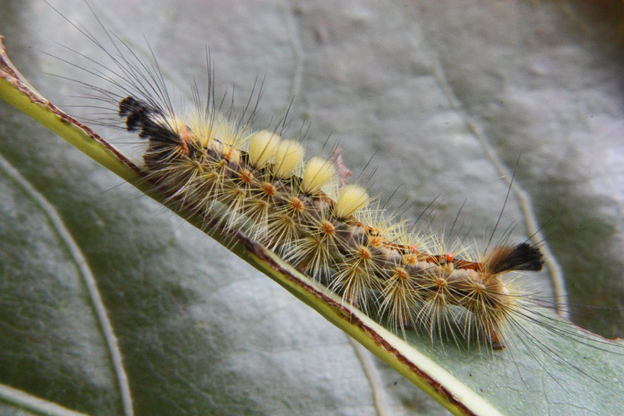
Orgyia antiqua (Lep.: Erebidae – Lymantriinae) Jeremy Tatum
Foodplant: Black Cottonwood
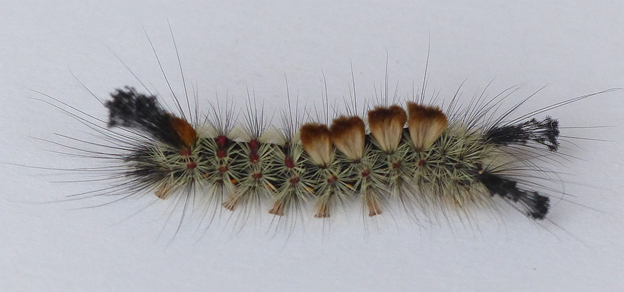
Orgyia pseudotsugata (Lep.: Erebidae – Lymantriinae) Jochen Möhr
Foodplant: Douglas Fir
Now – an embarrassing admission! In an earlier version of this posting, I had presented the caterpillar below as another tussock. It is not even remotely related to the tussocks. It is a dagger (Genus Acronicta) – a noctuid.

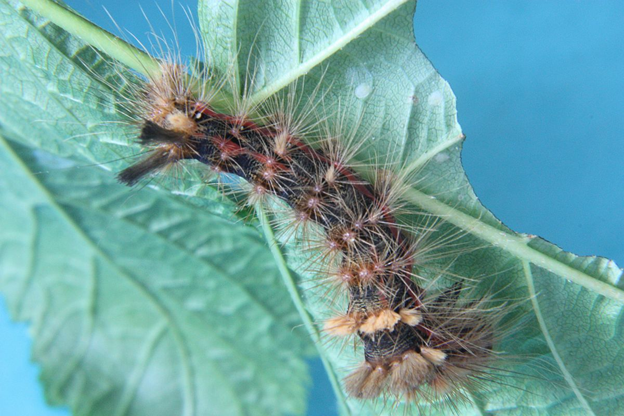
Acronicta impleta (Lep.: Noctuidae) Jeremy Tatum
Foodplant: Salmonberry
And now, a photograph sent to Invert Alert this morning from Powell River by Sharon Godkin. I initially assumed that it was O. antiqua, but now I’m not so sure. O.antiqua feeds on a wide variety of foodplants – trees, shrubs, low-growing weeds, but this one was on Typha, rather unusual for antiqua, so maybe it’s something else.

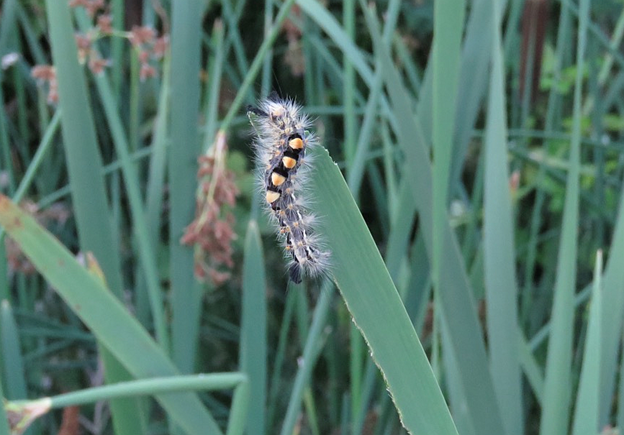
Something else? Sharon Godkin
Foodplant Typha
Lastly, since I’ve cheated a bit this morning by going off Vancouver Island to Powell River for Sharon’s caterpillar, I can’t resist going a bit further and showing a photograph of a singularly beautiful Orgyia sent to me by Dr David Wagner from (I think?) California:

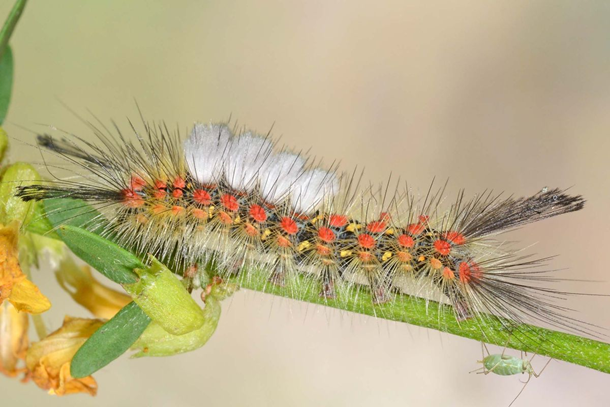
Orgyia cana (Lep.: Erebidae – Lymantriinae) David Wagner
To finish off this morning’s Invert Alert, here are two more views of Ian Cooper’s beewolf first shown yesterday:

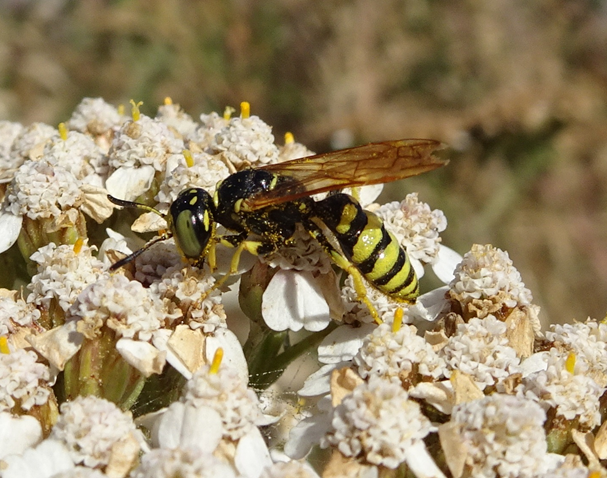
Beewolf Philanthus crabroniformis (Hym.: Crabronidae) Ian Cooper

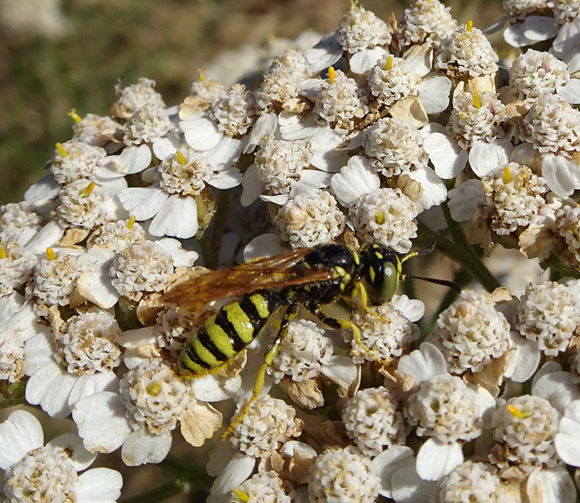
Beewolf Philanthus crabroniformis (Hym.: Crabronidae) Ian Cooper
I asked David Harris (Newhaven, Sussex, England) whether there are beewolves in England and he replied: Not only do we get Beewolves over here, but I think Newhaven must be the Beewolf city judging by the hundreds we have seen on our local nature reserve so far this year. I will dig out some photographs my friend Pete has taken of them recently. Locally some of ours have the yellow behind the eye rather than the more normal red. And we found one the other day bigger than a Hornet. Despite the text books saying they only feed on Honeybees, here this is just not true. I`m sure they must take some, but locally they seem to go for Yellow – legged Mining Bee and also linger well into November feasting on Ivy Bee. Again, not mentioned in the text books!
More this afternoon…
